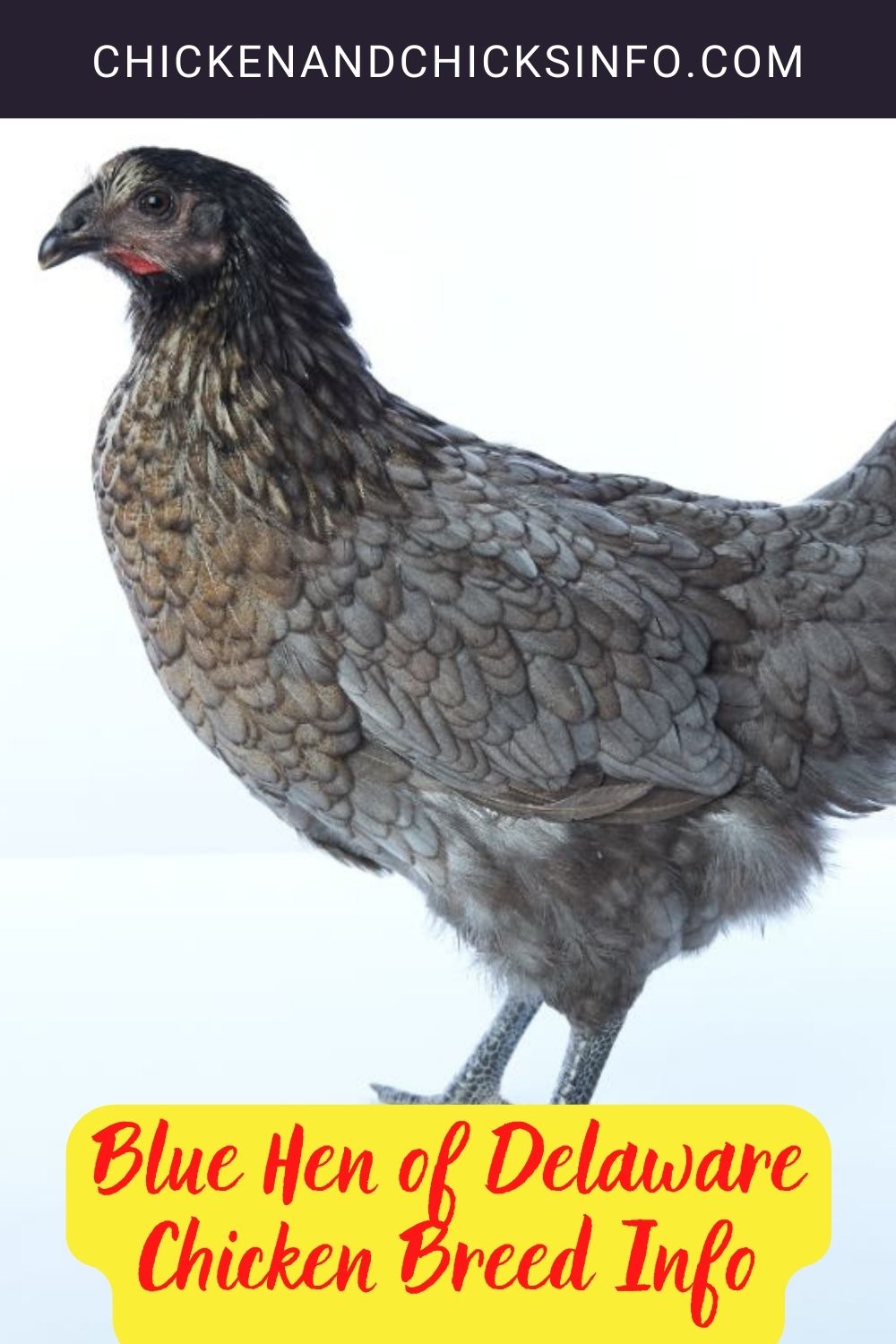The Blue Hen of Delaware is the official state bird of Delaware. However, it might surprise you to learn that Blue Hens are not actually a recognized breed in the United States and around the world.
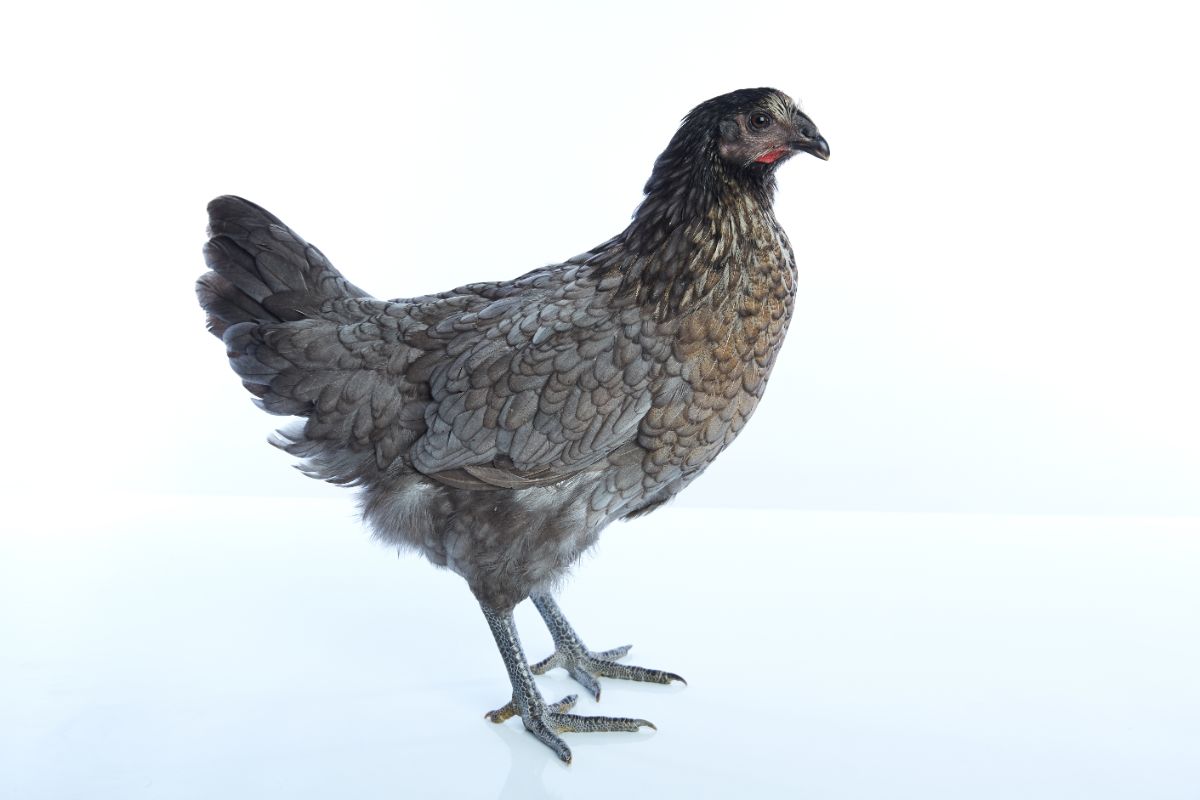
They are a result of two hundred years of cross-breeding, including breeds like the Blue Andalusian chicken from Spain. Today’s Blue Hens are different from the original Blue Hen of the 18th century.
Blue Hens are good layers of medium-sized, brown eggs. They will lay between 200 and 280 eggs per year, making them one of the more productive egg-laying breeds in the United States.
Jump to:

Blue Hen of Delaware Chicken Breed Quick Info
Blue Hen of Delaware Chicken Description
| Blue Hen of Delaware Type/Size: | Standard |
| Feather Color: | Greyish-blue |
| Leg Type: | Clean |
| Leg Color: | Yellow |
| Skin Color: | Yellow |
| Blue Hen of Delaware Ease of Raising/Keeping: | Easy |
| Blue Hen of Delaware Special Care Needs: | No |
| Is the Blue Hen of Delaware breed a common, rare, or protected breed of chicken? | Rare |
Blue Hen of Delaware Use
| Meat | No |
| Eggs | Yes |
| Dual Purpose | No |
| Blue Hen of Delaware Temperament: | Active |
| Blue Hen of Delaware Ability/Likelihood to Free Range: | Yes |
Blue Hen of Delaware Egg Production
| Egg Color | Brown |
| Egg Size | Medium |
| Estimated Number of Eggs Per Year | 200-280 |
| Likeliness to Brood Eggs/Raise Chicks | Low |
Blue Hen of Delaware Meat Production
| Dressed Weight Male | N/A |
| Dressed Weight Female | N/A |
Blue Hen of Delaware Climate Tolerance
| Heat | Good |
| Cold | Good |
Blue Hen of Delaware Age to Maturity
| Number of Months to Reach Full Size | 5 Months |
| Number of Months to Start Egg Laying | 5 Months |
| Number of Weeks/Months to Reach Meat Harvest Size | N/A |
Blue Hen of Delaware Size at Maturity
| Male | 5 lbs |
| Female | 4 lbs |
Origins of Blue Hen of Delaware Chicken
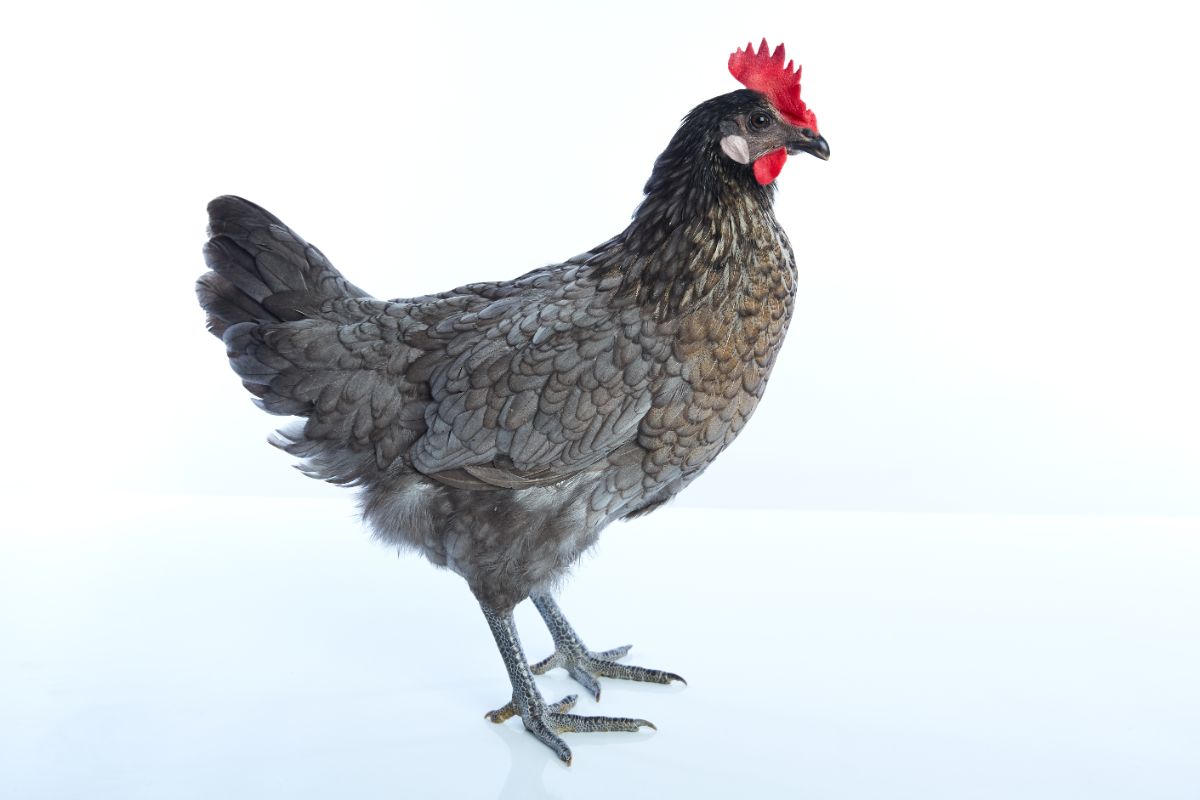
The Blue Hen of Delaware was developed during the Revolutionary War. They were named after a group of soldiers who were called the “Sons of the Blue Hen.” These soldiers came from Delaware and brought along Blue Hens to participate in cockfighting. The Blue Hen of Delaware became a symbol used throughout the Revolutionary and Civil Wars.
Today’s Blue Hens of Delaware are different than the original Blue Hens. They were originally bred in the 1960s by chicken breeder S. Hallock du Pont and, more recently, Delaware state veterinarian Wesley Towers.
They are commonly used as athletic mascots in the state of Delaware. The University of Delaware even keeps a flock of Blue Hen chickens on campus!
Some Things to Know About Blue Hen of Delaware Chicken
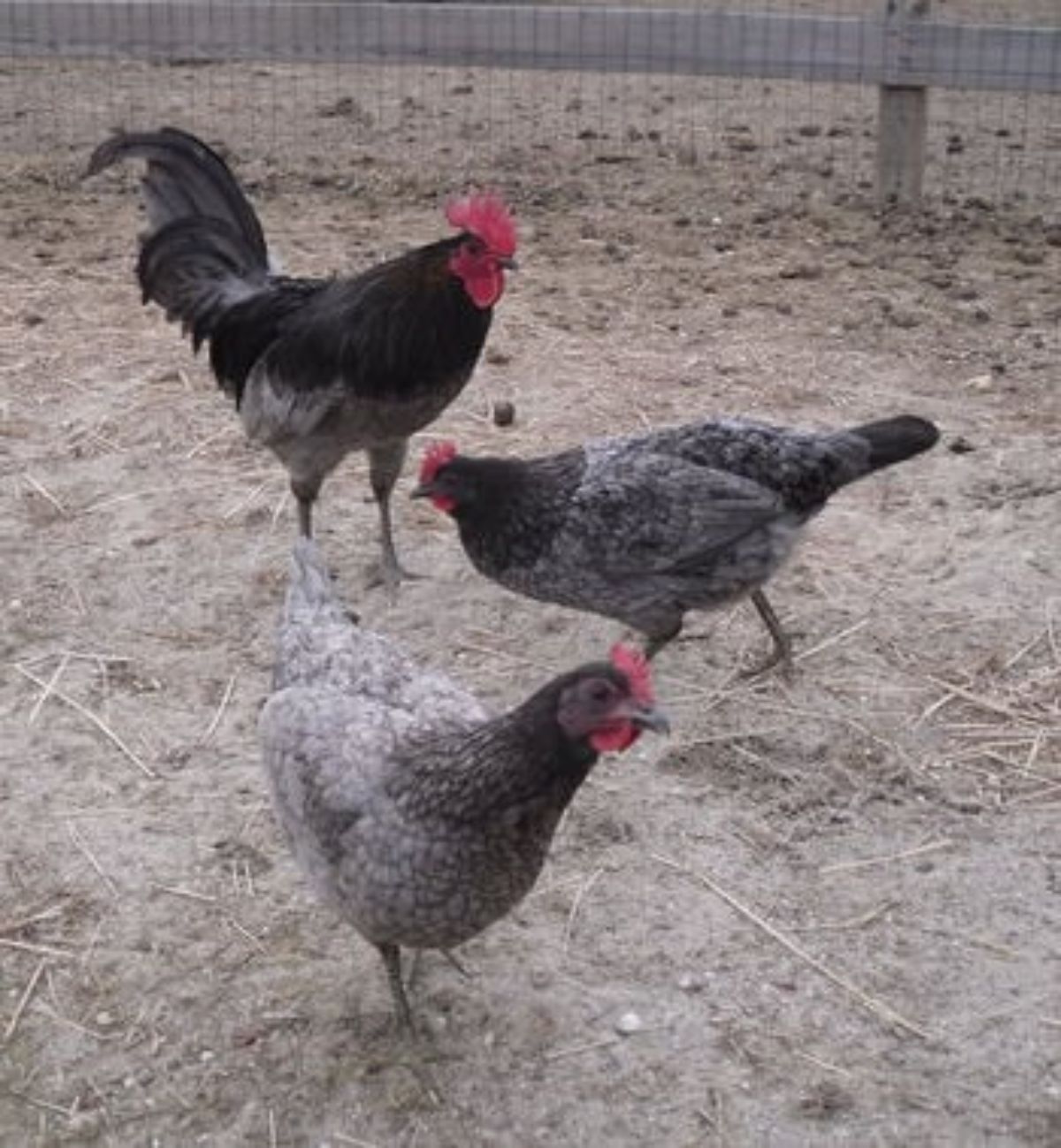
These steel-blue birds are named after the coloring of their feathers. They boast bright red wattles and a single comb, which can be at risk for frostbite in the winter.
However, they otherwise do well in cold weather as well as in the heat, provided that they have plenty of access to shade and fresh water.
Since this is not an official breed, there is no breed standard. However, there are breeders and enthusiasts who are committed to continuing the breed and standardizing it.
How Easy is it to Keep Blue Hen of Delaware Chickens?
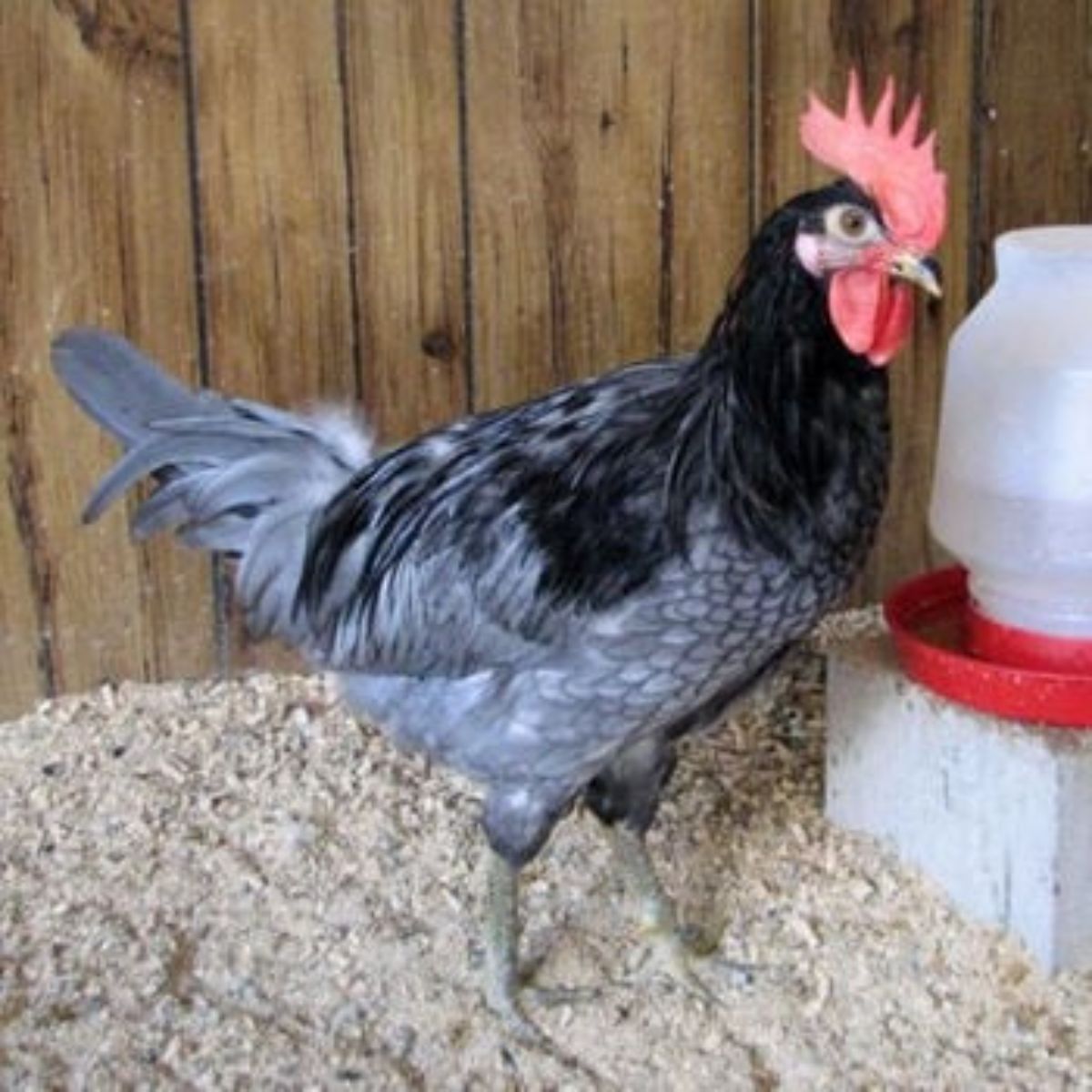
Due to the rarity of the Blue Hen of Delaware, it is difficult to find breeders who produce Blue Hen chicks. The most likely place you will find them is in Delaware.
They are active foragers who do well in a free-range situations. They are docile but not overly affectionate, and roosters can be aggressive when defending their flock.
Special Care and Considerations for Blue Hen of Delaware Chickens
As with all chickens with a single comb, frostbite can be a risk in the wintertime. Use a swipe of vaseline to protect their combs from freezing temperatures.
Otherwise, they are hardy, healthy birds that are not predisposed to any major health issues.
